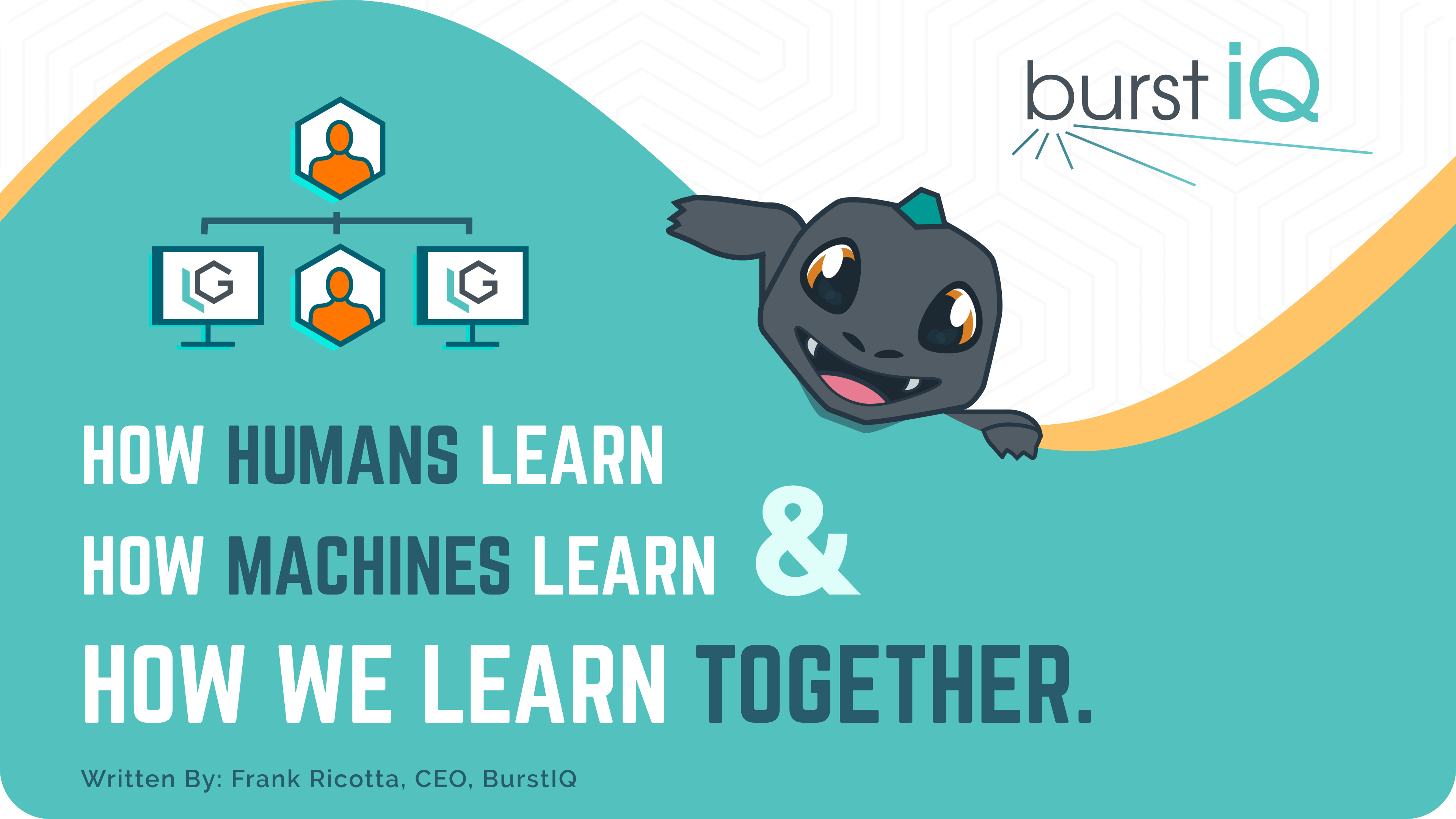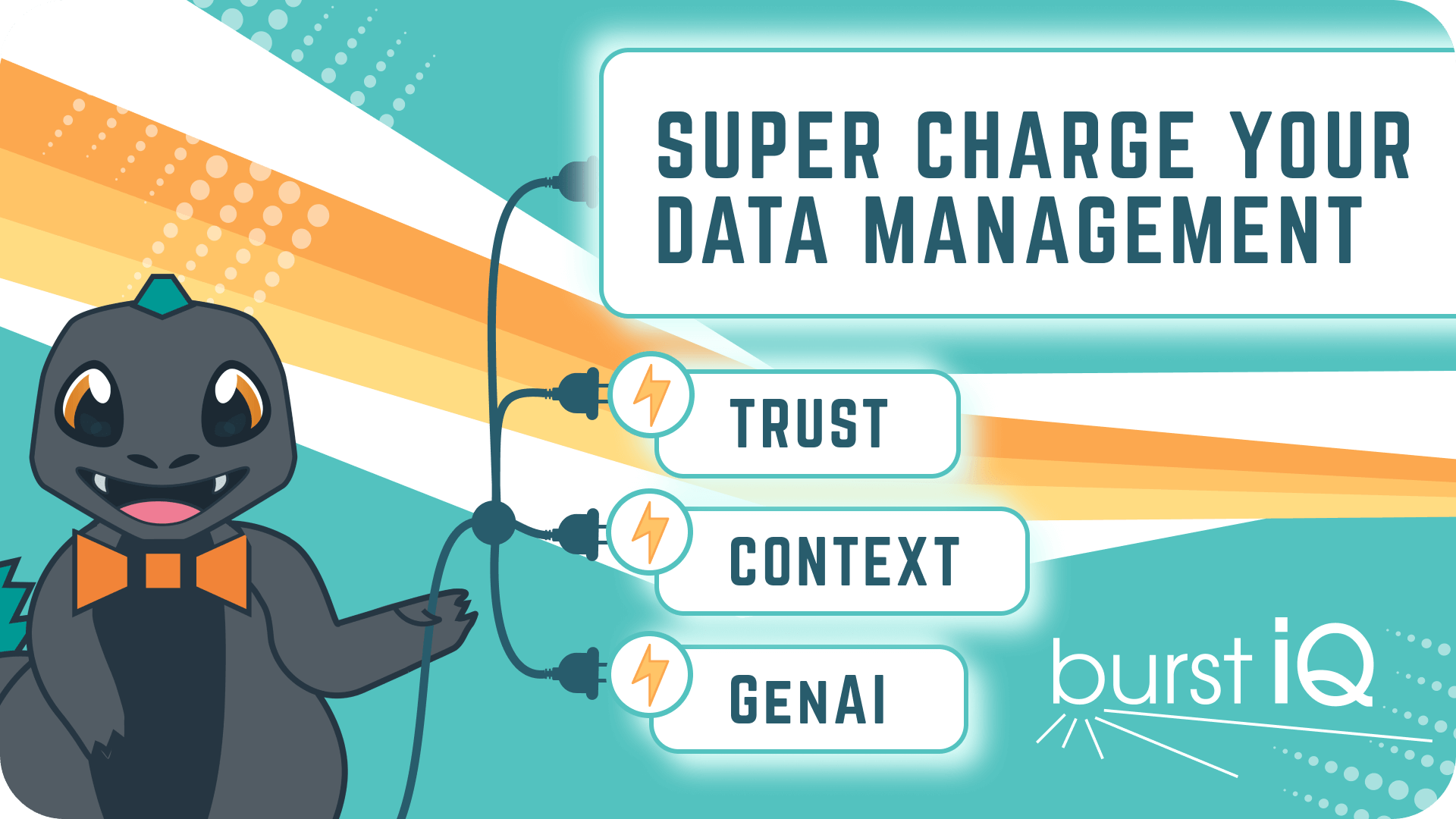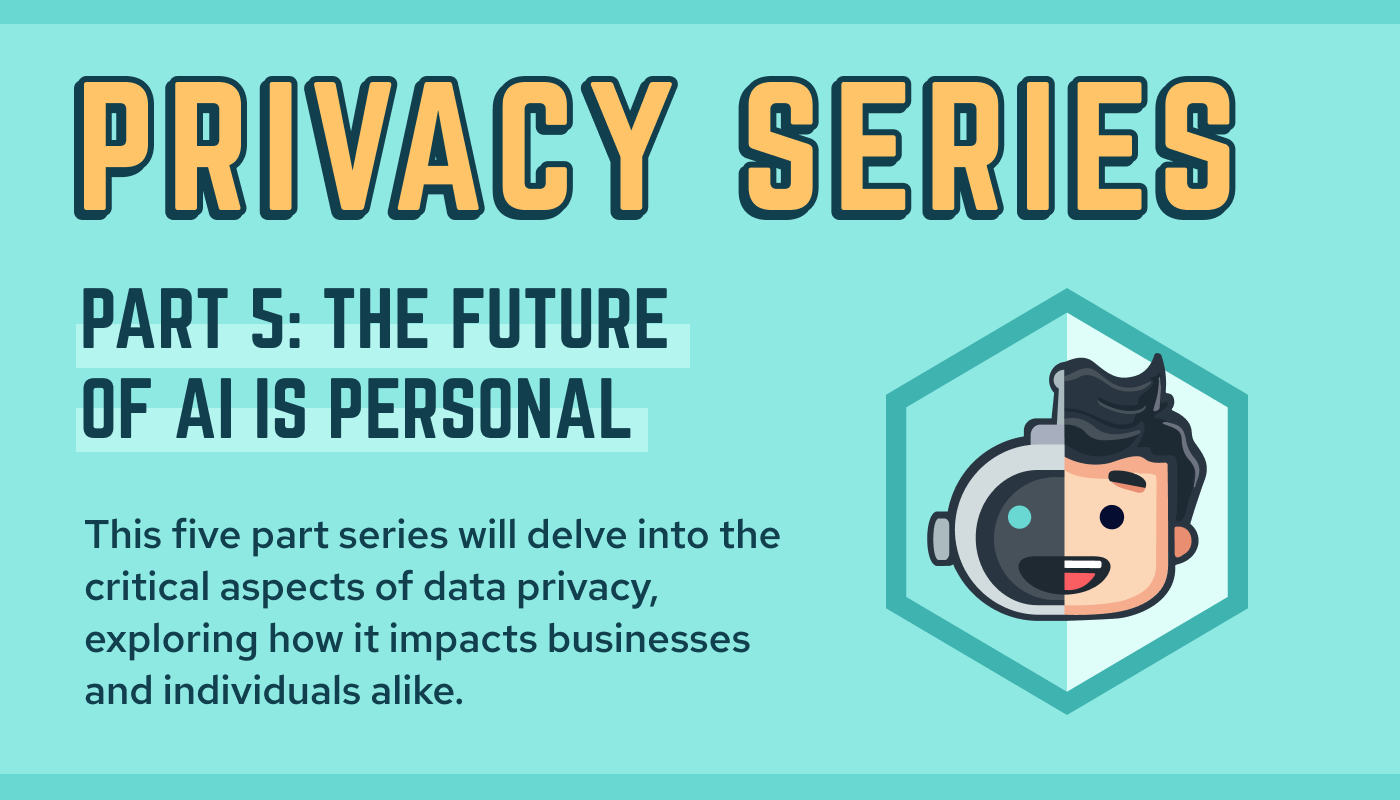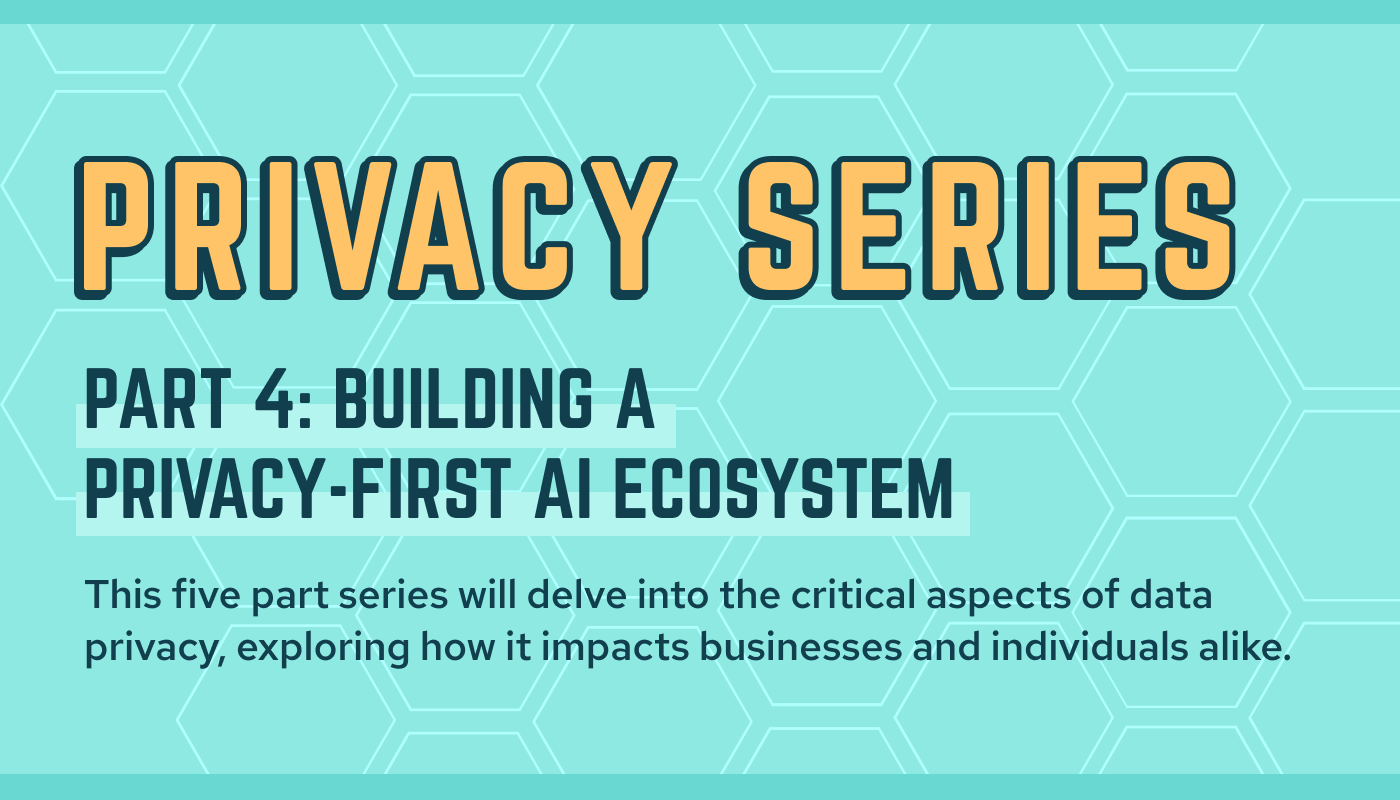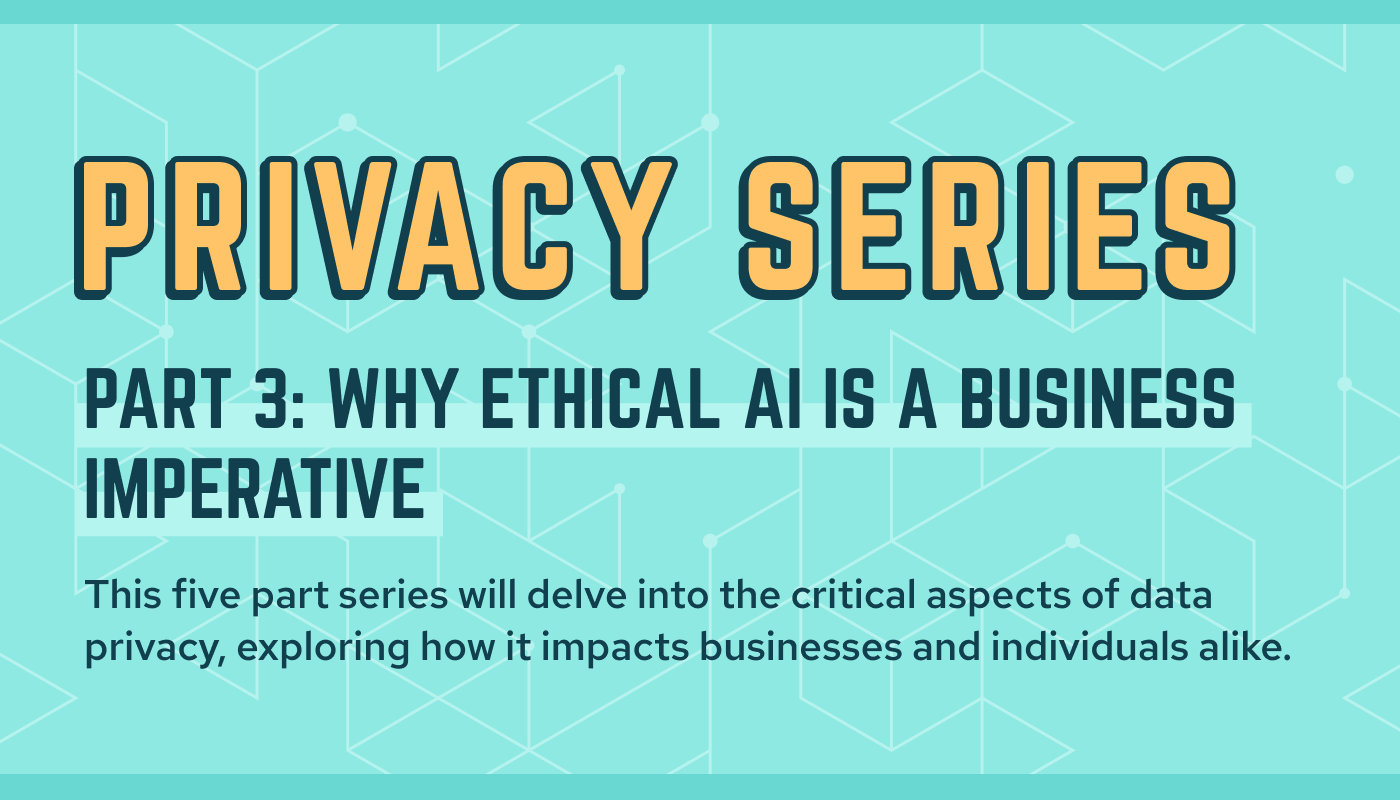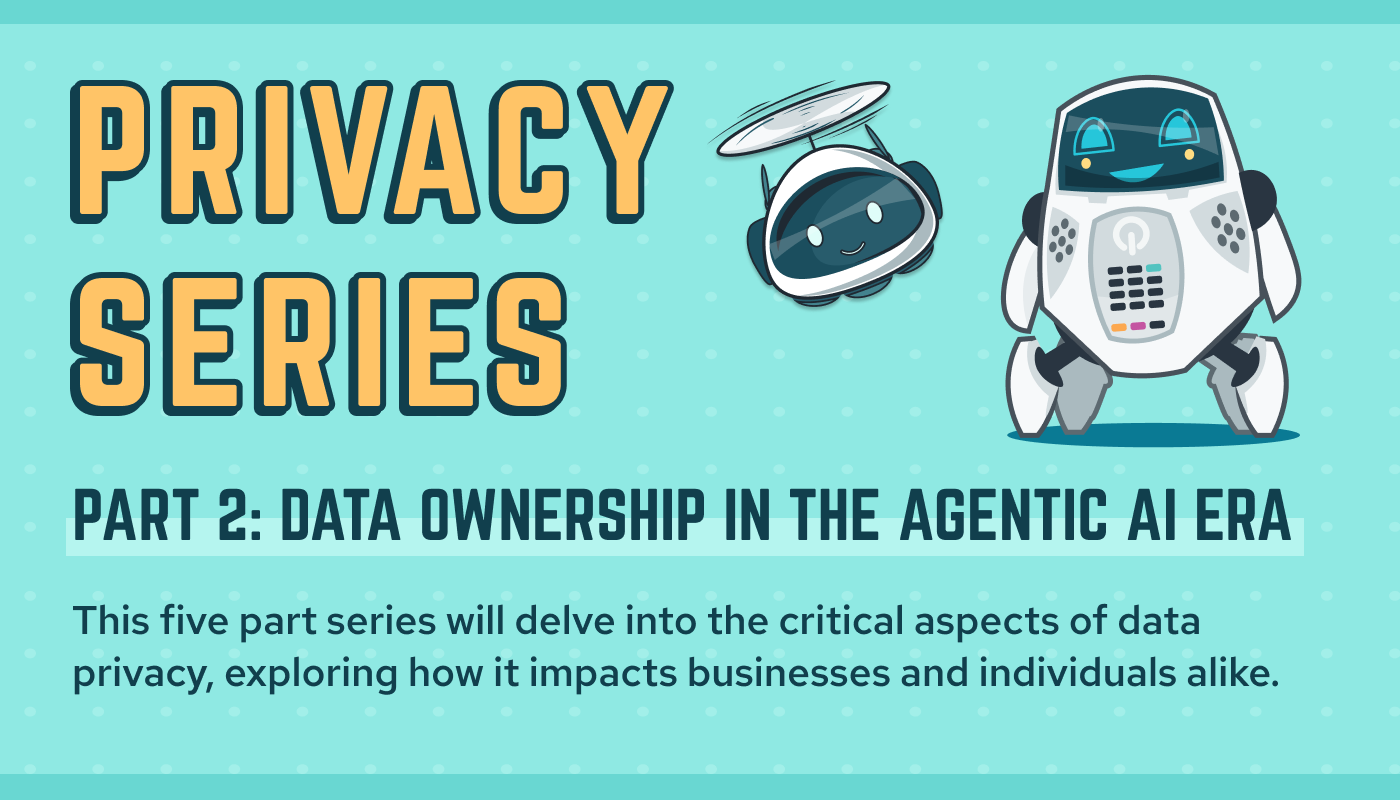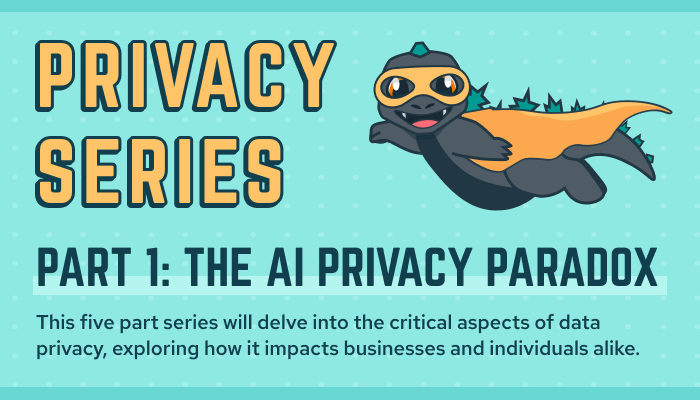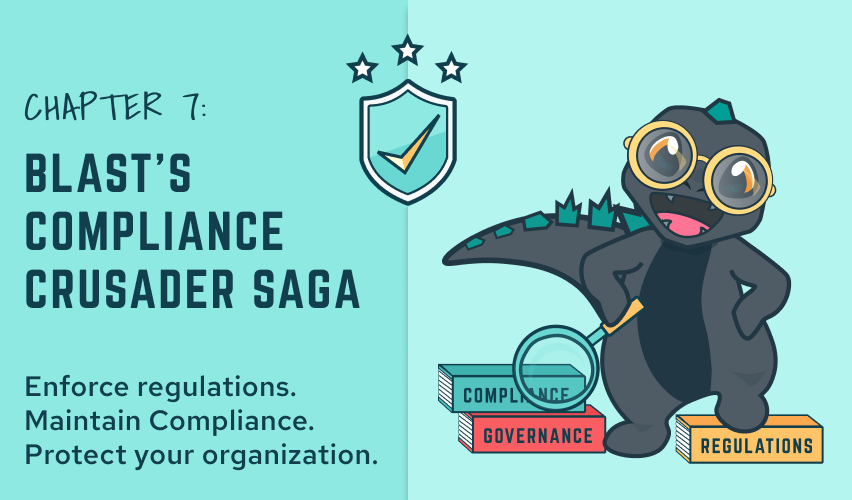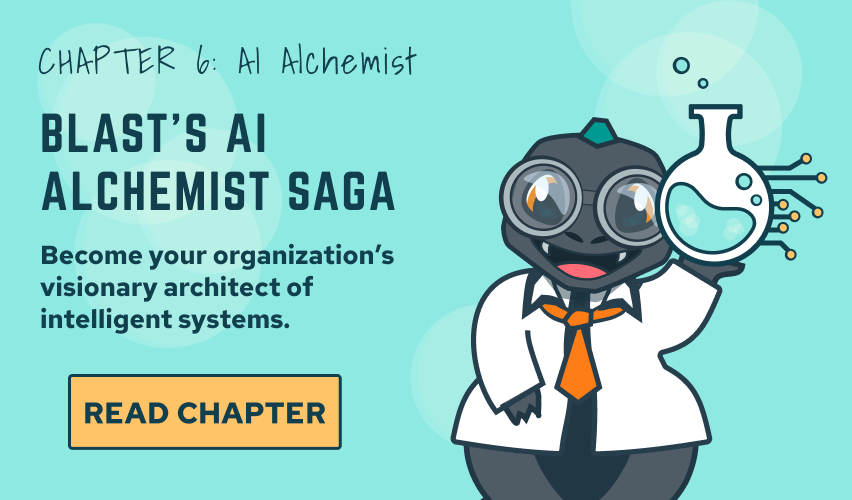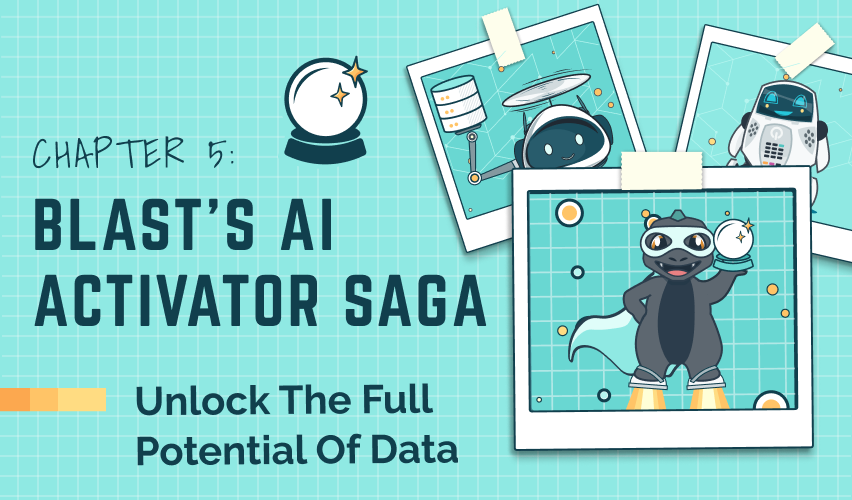From
Customer 360
to
Person 360
How a 4-Dimensional Data View Can Help You Create Indispensable Solutions
– Frank Ricotta, CEO & Co-Founder, BurstIQ
In our journey toward redefining personal engagement, we stand on the brink of a transformative shift. The vision of “Person 360” is not just a strategic asset; it’s a gateway to unparalleled innovation and personalization. Person 360 promises a future where a deep, nuanced understanding of individual preferences and behaviors informs every personal interaction. We purposely used the word “person” versus “customer” because, as individuals, when we interact in the world, we can be a customer, a patient, a professional, an employee, and more. It is time to broaden our perspective.
Imagine a world where every piece of data serves as a beacon, guiding the creation of experiences that are not just personalized but deeply resonant. This is the heart of the Person 360 vision—a holistic understanding that transcends traditional data silos and integrates every touchpoint into a cohesive narrative. It’s about unlocking the stories within the data and crafting experiences that are not just personalized but profoundly meaningful. The Person 360 vision transcends basic demographic information; it can include interactions, transactions, social media behavior, and even sentiment toward the brand. Extending beyond the enterprise and traditional customer data management, this Person 360 profile can form the basis of a digital twin, an AI avatar or companion, or any other digital manifestation of a person. It can also be used in a more dystopian manner in the form of a social credit score.
Charting the Course Through Data Chaos
As we navigate this path to Person 360 engagements, we’re confronted by the formidable adversary of data chaos. The potential for empowerment is immense, but so are the challenges in integrating and making sense of the vast seas of data. The potential for data chaos is especially true when the data is owned and controlled by many different people, companies, or even countries.
The quest for a 360 view requires navigating through a chaotic sea of data. Silos within organizations act like islands, isolating valuable insights from one another. The challenge of melding internal data with streams from partners and external sources adds layers of complexity.
Specifically, chaos stems from:
| Data Silos:
Disparate systems and departments often operate in isolation, hindering the flow of information and creating incomplete customer views.
| External Data Integration:The necessity to blend data from external partners and third-party sources with internal data adds complexity.
| Data Quality & Consistency:Ensuring accuracy, deduplication, and standardization across all data types and sources poses significant challenges.
| Privacy & Compliance:Navigating legal and ethical dimensions of data ownership and usage, especially with varying global regulations, complicates data integration efforts.
Organizations that can successfully navigate through this chaos can redefine how they harness and interpret data – and build Person 360 models that drive deeper, more meaningful human engagements.
Evolving Person 360 From Two Dimensions to Four
The basic concept of a 360-degree view is premised on a two-dimensional view. However, the vision of Person 360 is really four-dimensional. Our CTO, Tyson Henry, emphasizes that the data itself is only one part of a Person 360 view. Context, trust, and intelligence add additional perspective to each and every piece of data. Time and place are examples of context. Ownership and data lineage are examples of trust. Companion AIs and digital twins are examples of intelligence.
The Beacon of Web3, Data Fabrics, and Knowledge Graphs
Web3, data fabrics, and knowledge graphs provide the critical foundation to evolve 2-dimensional Person 360 views into four-dimensional views.
Web3, with its decentralized ethos, offers a new paradigm for data ownership and privacy, empowering people and businesses alike. Web3 provides the foundational trust infrastructure for people to BYOD (Bring Your Own Data). BYOD offers additional context and richness to organizational 4D views, creating opportunities for rich personalization in a shared incentive model. BYOD is quickly evolving into advanced digital twins. In this world, people own their own digital personas that are more than just data. A person can grant businesses access to their data or engage with businesses through their digital persona. These digital personas have embedded intelligence that allows them to operate and interact on behalf of the person in a trustworthy, transparent way.
Data fabrics dynamically weave together disparate sources, creating a tapestry of information that is both accessible and actionable. Knowledge graphs go a step further by enriching data with context, relationships, and insights, thus transforming raw data into a structured, understandable format ripe for analysis and personalization efforts. Combining the principles and capabilities of Web3, data fabrics, and knowledge graphs provides the means to build truly revolutionary data economies, ecosystems, and metaverses.
Data Quality or Quantity — or Both?
An ongoing discussion on data quality is emerging, set to escalate with the widespread adoption of AI. This debate concerns whether to enforce data quality during ingestion or conduct qualitative analytics and outlier analysis afterward. The discourse revolves around weighing trade-offs such as system complexity, real-time decision-making, scalability, and data loss or contamination risks.
The choice between these approaches is context-specific. Each method can be valid, but each is not sufficient by itself. For example, it is essential to understand data lineage. Pruning data and enforcing strict validation rules at the point of ingestion is prudent. However, pruned data that may seem insignificant today could be the key to driving advanced insights and understanding.
Additionally, the upfront complexity of this approach inhibits scalability and has a high probability of data loss. Not to mention that most organizations can never reach a point of standardization due to constantly changing needs and environments.
Ingesting everything provides maximum flexibility and a good foundation for organizations to discover unexpected insights, which will foster innovation. Conversely, downstream efforts can quickly become complex, and extremely expensive, and a lack of controls often leads to data swamps. Additionally, complexity drives the need for hard-to-find expertise, the reason why so many companies have short-cut data quality.
This is where data fabrics and knowledge graphs genuinely shine. When coupled with machine learning methods focused on data quality, organizations can achieve quantity and quality without sacrificing data lineage, verification, and integrity. More to come on this powerhouse combination in a future Knowledge Burst.
The Governance Imperative and the Chief Data Officer
In our digital world, governance is a regulatory necessity, a strategic compass, and quite frankly should be a moral imperative for every business that handles personal data. It guides us through the complexities of data management, ensuring that our journey is both compliant and ethical. To compete in today’s ever-changing world, organizations must push governance as close to the business execution authority as possible. To do this requires a new way of thinking, transitioning from a centralized control model and embracing distributed governance.
Distributed governance models allocate decision-making authority across different levels and domains within the organization and provide the flexibility and responsiveness needed in today’s fast-paced digital environment. When implemented correctly, control and protection mechanisms can be embedded in the data network without the reliance on centralized control organizational structures. The net result is that the overall system security posture improves significantly. More on this in a future Knowledge Burst.
Within this model, the role of the Chief Data Officer (CDO) becomes paramount. The CDO ensures data strategies align with business objectives, oversees data management practices, and champions data as a strategic asset. Moreover, the CDO plays a crucial role in establishing and enforcing governance policies, data quality standards, and compliance with data protection regulations, acting as a linchpin in the quest for a holistic Person 360 view. This role is pivotal in steering through regulatory waters and championing the cultural shift towards data-driven innovation. Do you consider yourself a data-led organization? If you don’t have a CDO, you aren’t as far along in your data journey as you may have thought.
The Voyage Ahead: Practical Steps to Empowerment
Embarking on this journey requires more than technological investment; it demands a strategic vision and a commitment to transformation: technical, process, corporate, and most importantly relationships and engagement. It begins with a roadmap, charting objectives and milestones that reflect both the ambition and the practical realities of achieving a holistic customer view. Investment in technology—data fabrics, APIs, knowledge graphs—lays the groundwork, but the actual journey is cultural, fostering an environment where data is valued and understood as the core of customer insight.
Practical steps toward achieving a Person 360 view include:
| Strategic Vision:
Set a course with clear objectives, understanding that this journey is transformative and iterative.
| Invest in Connectivity:
Embrace technologies that bridge gaps, turning the chaotic sea of data into a navigable ocean.
| Cultivate Data Stewardship:
Champion data quality and governance as foundational to trust and insight.
| Prioritize Privacy & Empowerment:
Build strategies around respecting and empowering the customer’s data rights.
| Foster a Culture of Innovation:
Encourage a mindset where data is the language of creativity and innovation.
| Navigate with Agility:
Be prepared to adapt, knowing that the data and customer interaction landscape is ever-evolving.
The Horizon of Opportunity
The journey from data chaos to empowerment signifies a transformative shift towards a deeper understanding of individuals and their needs. Despite the challenges posed by data complexity, emerging technologies offer promising solutions. Governance and the role of the Chief Data Officer are pivotal in navigating this landscape. Practical steps involve setting a clear vision, investing in connectivity, prioritizing data stewardship and privacy, fostering innovation, and adapting with agility. As we embrace this journey, we envision a future where data drives meaningful human experiences and unlocks new opportunities for innovation and growth.
About BurstIQ:
LifeGraph® by BurstIQ redefines the potential of organizational data. This next-generation data platform integrates advanced data management, privacy-enhancing technology, and knowledge graphs, transforming data into your organization’s ultimate superpower. Eliminate silos with a single, secure source of truth. LifeGraph reveals hidden connections within complex data sets, aligning with human and machine thinking for easier and more insightful analysis and powerful collaboration.
Organizations use LifeGraph to elevate legacy data lakes and warehouses into dynamic, secure, and person-centric data ecosystems that deliver value to everyone involved. With LifeGraph you can quickly address today’s problems and business initiatives, and ignite the spark of innovation to help your organization not only keep pace but set the tempo for the future.
To learn more about how LifeGraph can help you make data your superpower, please contact us here.
From
Customer 360
to
Person 360
How a 4-Dimensional Data View Can Help You Create Indispensable Solutions
– Frank Ricotta, CEO & Co-Founder, BurstIQ
In our journey toward redefining personal engagement, we stand on the brink of a transformative shift. The vision of “Person 360” is not just a strategic asset; it’s a gateway to unparalleled innovation and personalization. Person 360 promises a future where a deep, nuanced understanding of individual preferences and behaviors informs every personal interaction. We purposely used the word “person” versus “customer” because, as individuals, when we interact in the world, we can be a customer, a patient, a professional, an employee, and more. It is time to broaden our perspective.
Imagine a world where every piece of data serves as a beacon, guiding the creation of experiences that are not just personalized but deeply resonant. This is the heart of the Person 360 vision—a holistic understanding that transcends traditional data silos and integrates every touchpoint into a cohesive narrative. It’s about unlocking the stories within the data and crafting experiences that are not just personalized but profoundly meaningful. The Person 360 vision transcends basic demographic information; it can include interactions, transactions, social media behavior, and even sentiment toward the brand. Extending beyond the enterprise and traditional customer data management, this Person 360 profile can form the basis of a digital twin, an AI avatar or companion, or any other digital manifestation of a person. It can also be used in a more dystopian manner in the form of a social credit score.
Charting the Course Through Data Chaos
As we navigate this path to Person 360 engagements, we’re confronted by the formidable adversary of data chaos. The potential for empowerment is immense, but so are the challenges in integrating and making sense of the vast seas of data. The potential for data chaos is especially true when the data is owned and controlled by many different people, companies, or even countries.
The quest for a 360 view requires navigating through a chaotic sea of data. Silos within organizations act like islands, isolating valuable insights from one another. The challenge of melding internal data with streams from partners and external sources adds layers of complexity.
Specifically, chaos stems from:
| Data Silos:
Disparate systems and departments often operate in isolation, hindering the flow of information and creating incomplete customer views.
| External Data Integration:The necessity to blend data from external partners and third-party sources with internal data adds complexity.
| Data Quality & Consistency:Ensuring accuracy, deduplication, and standardization across all data types and sources poses significant challenges.
| Privacy & Compliance:Navigating legal and ethical dimensions of data ownership and usage, especially with varying global regulations, complicates data integration efforts.
Organizations that can successfully navigate through this chaos can redefine how they harness and interpret data – and build Person 360 models that drive deeper, more meaningful human engagements.
Evolving Person 360 From Two Dimensions to Four
The basic concept of a 360-degree view is premised on a two-dimensional view. However, the vision of Person 360 is really four-dimensional. Our CTO, Tyson Henry, emphasizes that the data itself is only one part of a Person 360 view. Context, trust, and intelligence add additional perspective to each and every piece of data. Time and place are examples of context. Ownership and data lineage are examples of trust. Companion AIs and digital twins are examples of intelligence.
The Beacon of Web3, Data Fabrics, and Knowledge Graphs
Web3, data fabrics, and knowledge graphs provide the critical foundation to evolve 2-dimensional Person 360 views into four-dimensional views.
Web3, with its decentralized ethos, offers a new paradigm for data ownership and privacy, empowering people and businesses alike. Web3 provides the foundational trust infrastructure for people to BYOD (Bring Your Own Data). BYOD offers additional context and richness to organizational 4D views, creating opportunities for rich personalization in a shared incentive model. BYOD is quickly evolving into advanced digital twins. In this world, people own their own digital personas that are more than just data. A person can grant businesses access to their data or engage with businesses through their digital persona. These digital personas have embedded intelligence that allows them to operate and interact on behalf of the person in a trustworthy, transparent way.
Data fabrics dynamically weave together disparate sources, creating a tapestry of information that is both accessible and actionable. Knowledge graphs go a step further by enriching data with context, relationships, and insights, thus transforming raw data into a structured, understandable format ripe for analysis and personalization efforts. Combining the principles and capabilities of Web3, data fabrics, and knowledge graphs provides the means to build truly revolutionary data economies, ecosystems, and metaverses.
Data Quality or Quantity — or Both?
An ongoing discussion on data quality is emerging, set to escalate with the widespread adoption of AI. This debate concerns whether to enforce data quality during ingestion or conduct qualitative analytics and outlier analysis afterward. The discourse revolves around weighing trade-offs such as system complexity, real-time decision-making, scalability, and data loss or contamination risks.
The choice between these approaches is context-specific. Each method can be valid, but each is not sufficient by itself. For example, it is essential to understand data lineage. Pruning data and enforcing strict validation rules at the point of ingestion is prudent. However, pruned data that may seem insignificant today could be the key to driving advanced insights and understanding.
Additionally, the upfront complexity of this approach inhibits scalability and has a high probability of data loss. Not to mention that most organizations can never reach a point of standardization due to constantly changing needs and environments.
Ingesting everything provides maximum flexibility and a good foundation for organizations to discover unexpected insights, which will foster innovation. Conversely, downstream efforts can quickly become complex, and extremely expensive, and a lack of controls often leads to data swamps. Additionally, complexity drives the need for hard-to-find expertise, the reason why so many companies have short-cut data quality.
This is where data fabrics and knowledge graphs genuinely shine. When coupled with machine learning methods focused on data quality, organizations can achieve quantity and quality without sacrificing data lineage, verification, and integrity. More to come on this powerhouse combination in a future Knowledge Burst.
The Governance Imperative and the Chief Data Officer
In our digital world, governance is a regulatory necessity, a strategic compass, and quite frankly should be a moral imperative for every business that handles personal data. It guides us through the complexities of data management, ensuring that our journey is both compliant and ethical. To compete in today’s ever-changing world, organizations must push governance as close to the business execution authority as possible. To do this requires a new way of thinking, transitioning from a centralized control model and embracing distributed governance.
Distributed governance models allocate decision-making authority across different levels and domains within the organization and provide the flexibility and responsiveness needed in today’s fast-paced digital environment. When implemented correctly, control and protection mechanisms can be embedded in the data network without the reliance on centralized control organizational structures. The net result is that the overall system security posture improves significantly. More on this in a future Knowledge Burst.
Within this model, the role of the Chief Data Officer (CDO) becomes paramount. The CDO ensures data strategies align with business objectives, oversees data management practices, and champions data as a strategic asset. Moreover, the CDO plays a crucial role in establishing and enforcing governance policies, data quality standards, and compliance with data protection regulations, acting as a linchpin in the quest for a holistic Person 360 view. This role is pivotal in steering through regulatory waters and championing the cultural shift towards data-driven innovation. Do you consider yourself a data-led organization? If you don’t have a CDO, you aren’t as far along in your data journey as you may have thought.
The Voyage Ahead: Practical Steps to Empowerment
Embarking on this journey requires more than technological investment; it demands a strategic vision and a commitment to transformation: technical, process, corporate, and most importantly relationships and engagement. It begins with a roadmap, charting objectives and milestones that reflect both the ambition and the practical realities of achieving a holistic customer view. Investment in technology—data fabrics, APIs, knowledge graphs—lays the groundwork, but the actual journey is cultural, fostering an environment where data is valued and understood as the core of customer insight.
Practical steps toward achieving a Person 360 view include:
| Strategic Vision:
Set a course with clear objectives, understanding that this journey is transformative and iterative.
| Invest in Connectivity:
Embrace technologies that bridge gaps, turning the chaotic sea of data into a navigable ocean.
| Cultivate Data Stewardship:
Champion data quality and governance as foundational to trust and insight.
| Prioritize Privacy & Empowerment:
Build strategies around respecting and empowering the customer’s data rights.
| Foster a Culture of Innovation:
Encourage a mindset where data is the language of creativity and innovation.
| Navigate with Agility:
Be prepared to adapt, knowing that the data and customer interaction landscape is ever-evolving.
The Horizon of Opportunity
The journey from data chaos to empowerment signifies a transformative shift towards a deeper understanding of individuals and their needs. Despite the challenges posed by data complexity, emerging technologies offer promising solutions. Governance and the role of the Chief Data Officer are pivotal in navigating this landscape. Practical steps involve setting a clear vision, investing in connectivity, prioritizing data stewardship and privacy, fostering innovation, and adapting with agility. As we embrace this journey, we envision a future where data drives meaningful human experiences and unlocks new opportunities for innovation and growth.
About BurstIQ:
LifeGraph® by BurstIQ redefines the potential of organizational data. This next-generation data platform integrates advanced data management, privacy-enhancing technology, and knowledge graphs, transforming data into your organization’s ultimate superpower. Eliminate silos with a single, secure source of truth. LifeGraph reveals hidden connections within complex data sets, aligning with human and machine thinking for easier and more insightful analysis and powerful collaboration.
Organizations use LifeGraph to elevate legacy data lakes and warehouses into dynamic, secure, and person-centric data ecosystems that deliver value to everyone involved. With LifeGraph you can quickly address today’s problems and business initiatives, and ignite the spark of innovation to help your organization not only keep pace but set the tempo for the future.
To learn more about how LifeGraph can help you make data your superpower, please contact us here.
From
Customer 360
to
Person 360
How a 4-Dimensional Data View Can Help You Create Indispensable Solutions
– Frank Ricotta, CEO & Co-Founder, BurstIQ
In our journey toward redefining personal engagement, we stand on the brink of a transformative shift. The vision of “Person 360” is not just a strategic asset; it’s a gateway to unparalleled innovation and personalization. Person 360 promises a future where a deep, nuanced understanding of individual preferences and behaviors informs every personal interaction. We purposely used the word “person” versus “customer” because, as individuals, when we interact in the world, we can be a customer, a patient, a professional, an employee, and more. It is time to broaden our perspective.
Imagine a world where every piece of data serves as a beacon, guiding the creation of experiences that are not just personalized but deeply resonant. This is the heart of the Person 360 vision—a holistic understanding that transcends traditional data silos and integrates every touchpoint into a cohesive narrative. It’s about unlocking the stories within the data and crafting experiences that are not just personalized but profoundly meaningful. The Person 360 vision transcends basic demographic information; it can include interactions, transactions, social media behavior, and even sentiment toward the brand. Extending beyond the enterprise and traditional customer data management, this Person 360 profile can form the basis of a digital twin, an AI avatar or companion, or any other digital manifestation of a person. It can also be used in a more dystopian manner in the form of a social credit score.
Charting the Course Through Data Chaos
As we navigate this path to Person 360 engagements, we’re confronted by the formidable adversary of data chaos. The potential for empowerment is immense, but so are the challenges in integrating and making sense of the vast seas of data. The potential for data chaos is especially true when the data is owned and controlled by many different people, companies, or even countries.
The quest for a 360 view requires navigating through a chaotic sea of data. Silos within organizations act like islands, isolating valuable insights from one another. The challenge of melding internal data with streams from partners and external sources adds layers of complexity.
Specifically, chaos stems from:
| Data Silos:
Disparate systems and departments often operate in isolation, hindering the flow of information and creating incomplete customer views.
| External Data Integration:
The necessity to blend data from external partners and third-party sources with internal data adds complexity.
| Data Quality & Consistency:
Ensuring accuracy, deduplication, and standardization across all data types and sources poses significant challenges.
| Privacy & Compliance:
Navigating legal and ethical dimensions of data ownership and usage, especially with varying global regulations, complicates data integration efforts.
Organizations that can successfully navigate through this chaos can redefine how they harness and interpret data – and build Person 360 models that drive deeper, more meaningful human engagements.
Evolving Person 360 From Two Dimensions to Four
The basic concept of a 360-degree view is premised on a two-dimensional view. However, the vision of Person 360 is really four-dimensional. Our CTO, Tyson Henry, emphasizes that the data itself is only one part of a Person 360 view. Context, trust, and intelligence add additional perspective to each and every piece of data. Time and place are examples of context. Ownership and data lineage are examples of trust. Companion AIs and digital twins are examples of intelligence.
The Beacon of Web3, Data Fabrics, and Knowledge Graphs
Web3, data fabrics, and knowledge graphs provide the critical foundation to evolve 2-dimensional Person 360 views into four-dimensional views.
Web3, with its decentralized ethos, offers a new paradigm for data ownership and privacy, empowering people and businesses alike. Web3 provides the foundational trust infrastructure for people to BYOD (Bring Your Own Data). BYOD offers additional context and richness to organizational 4D views, creating opportunities for rich personalization in a shared incentive model. BYOD is quickly evolving into advanced digital twins. In this world, people own their own digital personas that are more than just data. A person can grant businesses access to their data or engage with businesses through their digital persona. These digital personas have embedded intelligence that allows them to operate and interact on behalf of the person in a trustworthy, transparent way.
Data fabrics dynamically weave together disparate sources, creating a tapestry of information that is both accessible and actionable. Knowledge graphs go a step further by enriching data with context, relationships, and insights, thus transforming raw data into a structured, understandable format ripe for analysis and personalization efforts. Combining the principles and capabilities of Web3, data fabrics, and knowledge graphs provides the means to build truly revolutionary data economies, ecosystems, and metaverses.
Data Quality or Quantity — or Both?
An ongoing discussion on data quality is emerging, set to escalate with the widespread adoption of AI. This debate concerns whether to enforce data quality during ingestion or conduct qualitative analytics and outlier analysis afterward. The discourse revolves around weighing trade-offs such as system complexity, real-time decision-making, scalability, and data loss or contamination risks.
The choice between these approaches is context-specific. Each method can be valid, but each is not sufficient by itself. For example, it is essential to understand data lineage. Pruning data and enforcing strict validation rules at the point of ingestion is prudent. However, pruned data that may seem insignificant today could be the key to driving advanced insights and understanding.
Additionally, the upfront complexity of this approach inhibits scalability and has a high probability of data loss. Not to mention that most organizations can never reach a point of standardization due to constantly changing needs and environments.
Ingesting everything provides maximum flexibility and a good foundation for organizations to discover unexpected insights, which will foster innovation. Conversely, downstream efforts can quickly become complex, and extremely expensive, and a lack of controls often leads to data swamps. Additionally, complexity drives the need for hard-to-find expertise, the reason why so many companies have short-cut data quality.
This is where data fabrics and knowledge graphs genuinely shine. When coupled with machine learning methods focused on data quality, organizations can achieve quantity and quality without sacrificing data lineage, verification, and integrity. More to come on this powerhouse combination in a future Knowledge Burst.
The Governance Imperative and the Chief Data Officer
In our digital world, governance is a regulatory necessity, a strategic compass, and quite frankly should be a moral imperative for every business that handles personal data. It guides us through the complexities of data management, ensuring that our journey is both compliant and ethical. To compete in today’s ever-changing world, organizations must push governance as close to the business execution authority as possible. To do this requires a new way of thinking, transitioning from a centralized control model and embracing distributed governance.
Distributed governance models allocate decision-making authority across different levels and domains within the organization and provide the flexibility and responsiveness needed in today’s fast-paced digital environment. When implemented correctly, control and protection mechanisms can be embedded in the data network without the reliance on centralized control organizational structures. The net result is that the overall system security posture improves significantly. More on this in a future Knowledge Burst.
Within this model, the role of the Chief Data Officer (CDO) becomes paramount. The CDO ensures data strategies align with business objectives, oversees data management practices, and champions data as a strategic asset. Moreover, the CDO plays a crucial role in establishing and enforcing governance policies, data quality standards, and compliance with data protection regulations, acting as a linchpin in the quest for a holistic Person 360 view. This role is pivotal in steering through regulatory waters and championing the cultural shift towards data-driven innovation. Do you consider yourself a data-led organization? If you don’t have a CDO, you aren’t as far along in your data journey as you may have thought.
The Voyage Ahead: Practical Steps to Empowerment
Embarking on this journey requires more than technological investment; it demands a strategic vision and a commitment to transformation: technical, process, corporate, and most importantly relationships and engagement. It begins with a roadmap, charting objectives and milestones that reflect both the ambition and the practical realities of achieving a holistic customer view. Investment in technology—data fabrics, APIs, knowledge graphs—lays the groundwork, but the actual journey is cultural, fostering an environment where data is valued and understood as the core of customer insight.
Practical steps toward achieving a Person 360 view include:
| Strategic Vision:
Set a course with clear objectives, understanding that this journey is transformative and iterative.
| Invest in Connectivity:
Embrace technologies that bridge gaps, turning the chaotic sea of data into a navigable ocean.
| Cultivate Data Stewardship:
Champion data quality and governance as foundational to trust and insight.
| Prioritize Privacy & Empowerment:
Build strategies around respecting and empowering the customer’s data rights.
| Foster a Culture of Innovation:
Encourage a mindset where data is the language of creativity and innovation.
| Navigate with Agility:
Be prepared to adapt, knowing that the data and customer interaction landscape is ever-evolving.
The Horizon of Opportunity
The journey from data chaos to empowerment signifies a transformative shift towards a deeper understanding of individuals and their needs. Despite the challenges posed by data complexity, emerging technologies offer promising solutions. Governance and the role of the Chief Data Officer are pivotal in navigating this landscape. Practical steps involve setting a clear vision, investing in connectivity, prioritizing data stewardship and privacy, fostering innovation, and adapting with agility. As we embrace this journey, we envision a future where data drives meaningful human experiences and unlocks new opportunities for innovation and growth.
About BurstIQ:
LifeGraph® by BurstIQ redefines the potential of organizational data. This next-generation data platform integrates advanced data management, privacy-enhancing technology, and knowledge graphs, transforming data into your organization’s ultimate superpower. Eliminate silos with a single, secure source of truth. LifeGraph reveals hidden connections within complex data sets, aligning with human and machine thinking for easier and more insightful analysis and powerful collaboration.
Organizations use LifeGraph to elevate legacy data lakes and warehouses into dynamic, secure, and person-centric data ecosystems that deliver value to everyone involved. With LifeGraph you can quickly address today’s problems and business initiatives, and ignite the spark of innovation to help your organization not only keep pace but set the tempo for the future.
To learn more about how LifeGraph can help you make data your superpower, please contact us here.
